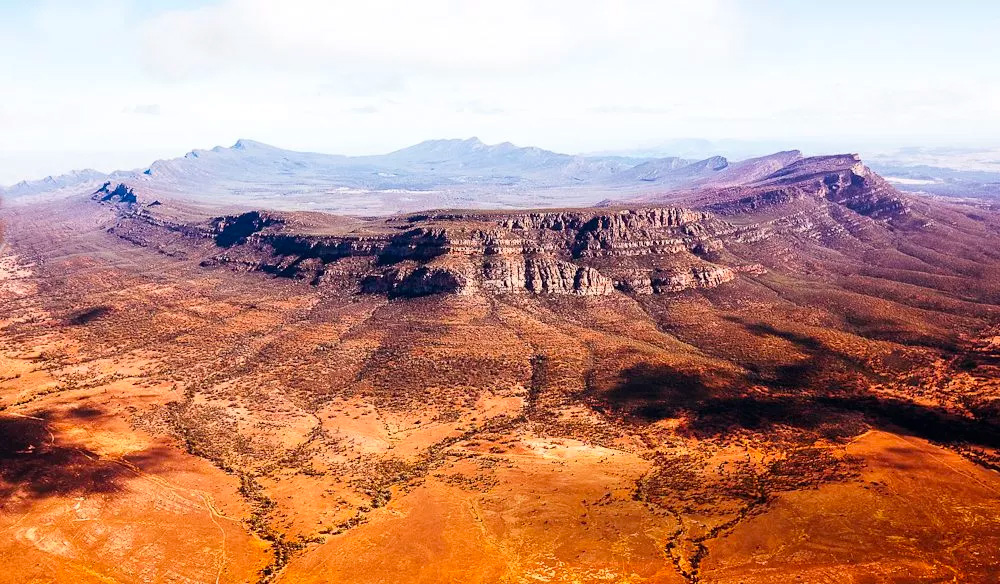Wilpena Pound
Wilpena Pound
Wilpena Pound – also known by its Adnyamathanha name of Ikara, meaning “meeting place” – is a natural amphitheatre of mountains located 429 km north of Adelaide, in the heart of the Ikara-Flinders Ranges National Park.
It was discovered in 1850 by William Chace while employed by the Browne Brothers. It was surveyed by Frederick Sinnett in 1851 and the 40,000 hectare lease, one of the very first to be issued, was taken up that year by the Browne Brothers. The station was established by their partner, twenty-five year old Henry Strong Price and grew to 200,000 hectares by 1863. Price decided to build the homestead and station headquarters near the Wilpena Creek which drains the Pound, the best and most scenic location.
According to one account, the Pound itself was used for keeping horses, and was such a good natural enclosure that the horses became as wild as brumbies.
The station was retired in 1986, and it is now a historic precinct, one of South Australia’s most significant pastoral settlement sites due to its well-preserved condition, wealth of heritage and spectacular natural setting. Wilpena Station is the most complete group of early station buildings surviving in South Australia in an authentic pastoral landscape.
The one horse we have from this area, mare Sarie Marais (named after the song sung by both sides in the Boer War), is most likely descended from an Arab Pony stallion, High-Class, who was on Wilpena Station in 1904, imported from Madras. Her grandson Waler gelding Enoch was bred by Angela Tiede in Victoria with aspirations for him to educate our young people about Walers by participating in Waler displays and pontificating about all things Waler on Facebook.
